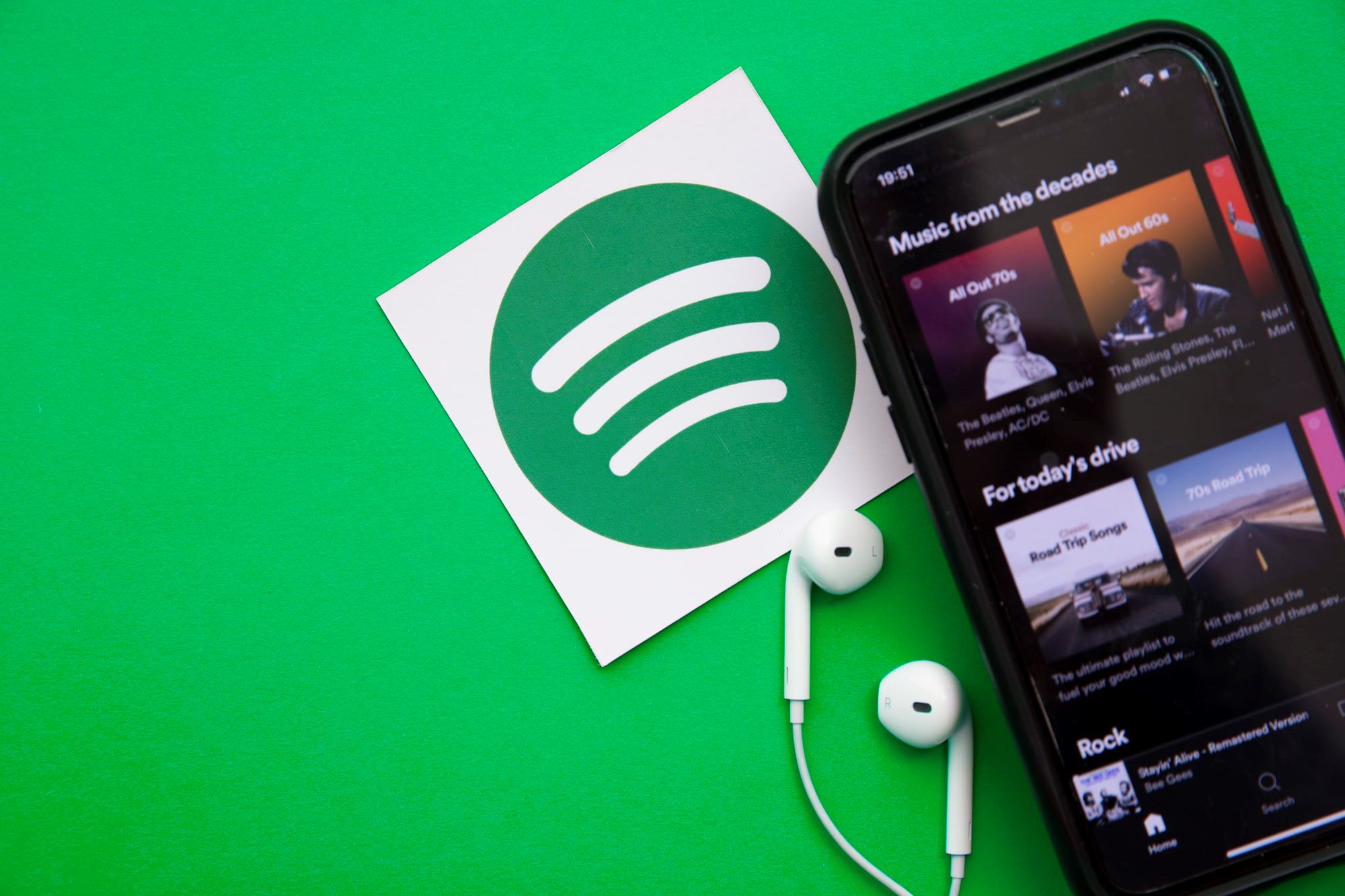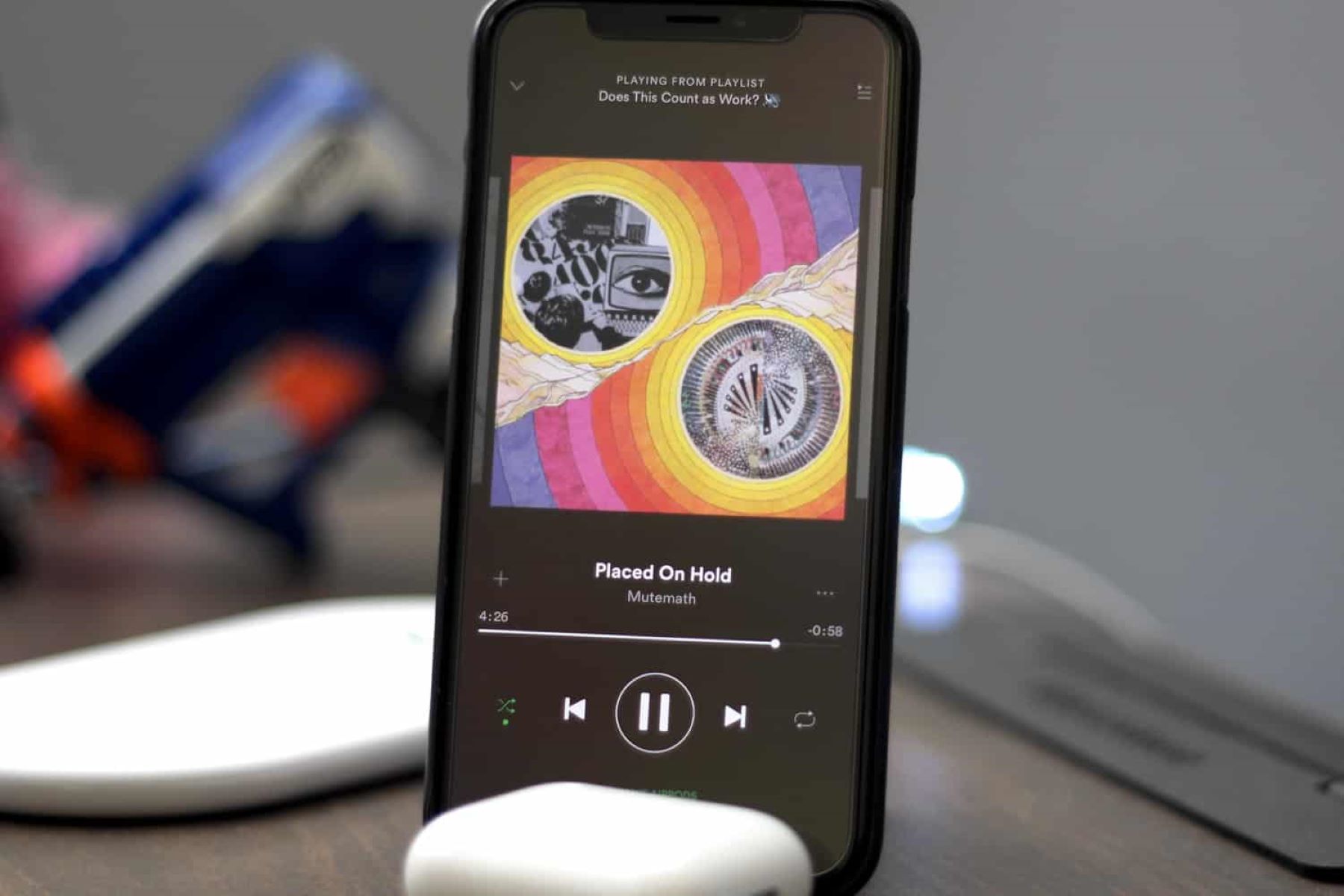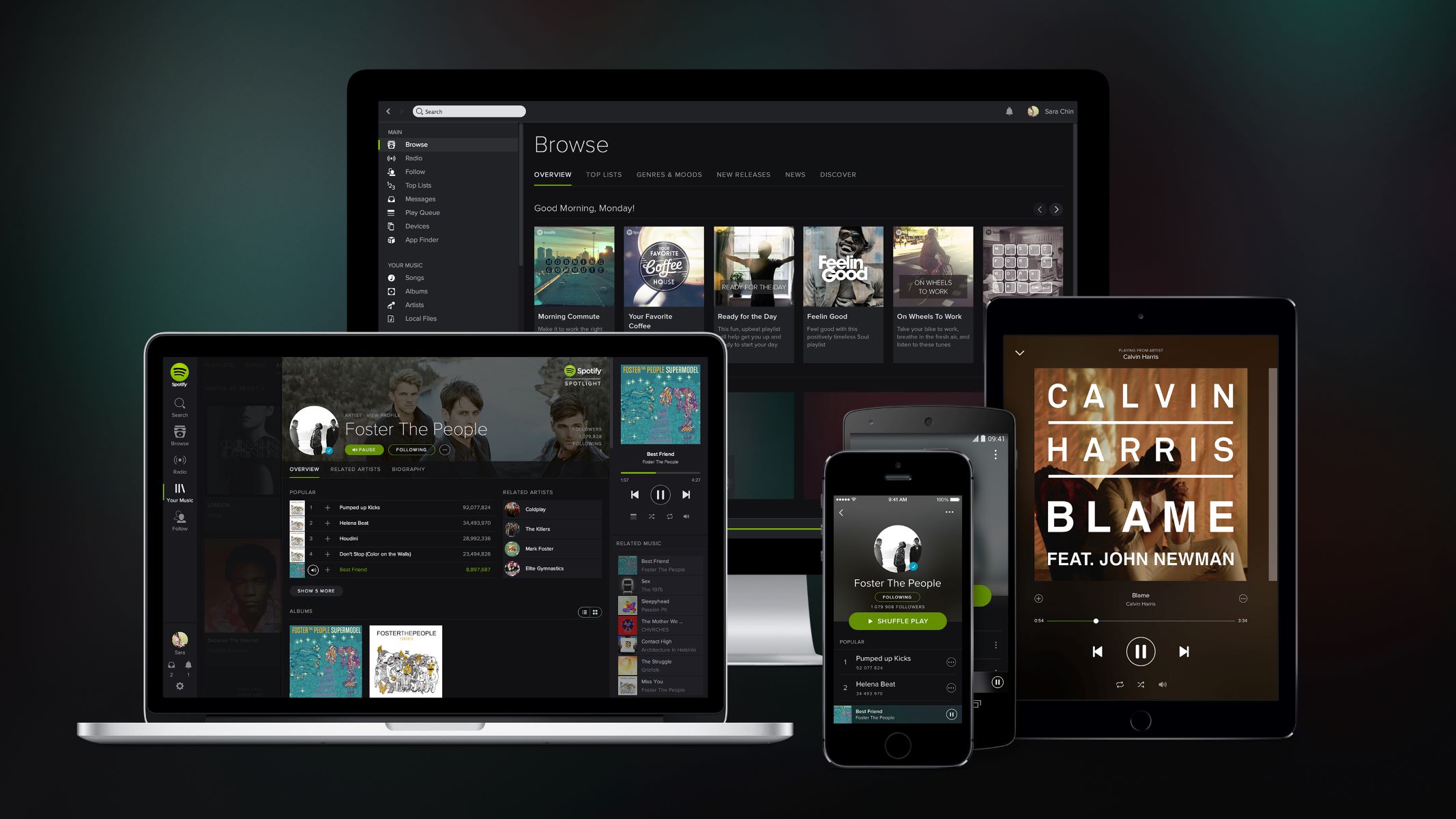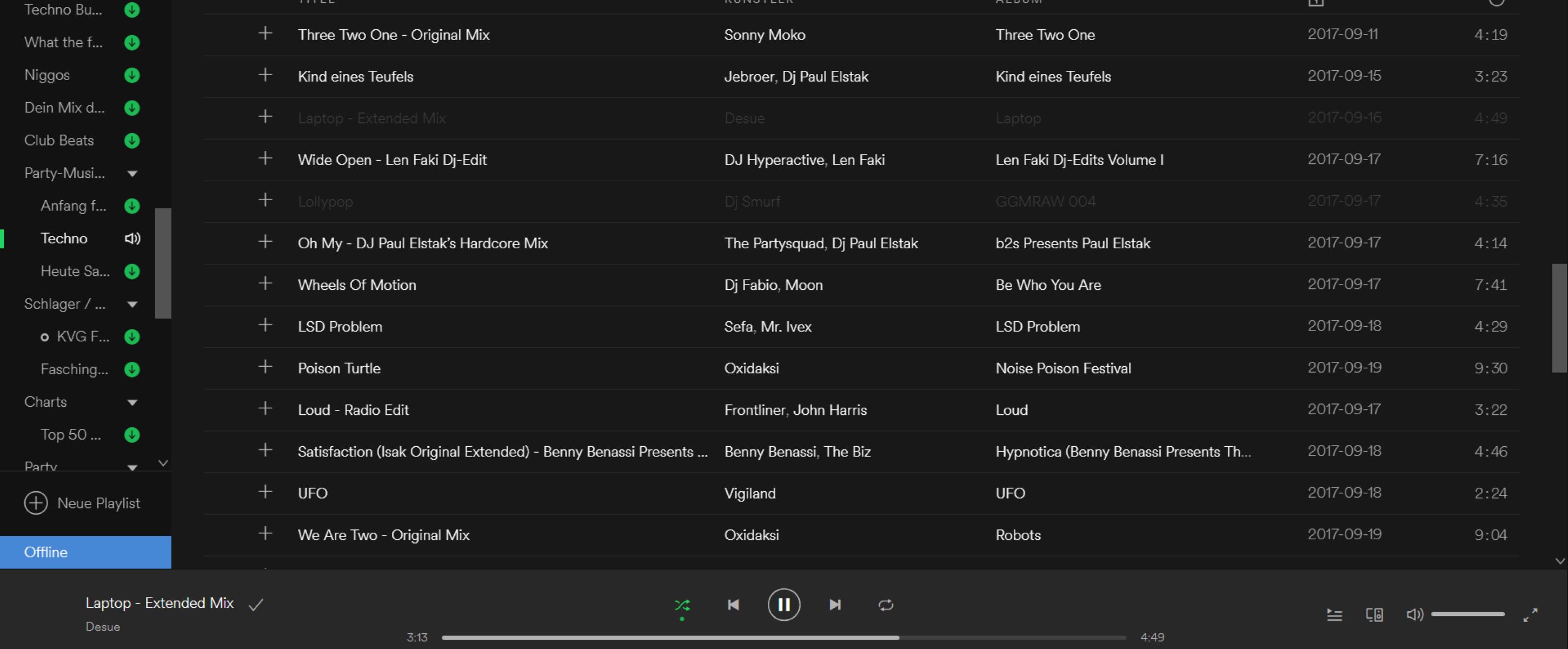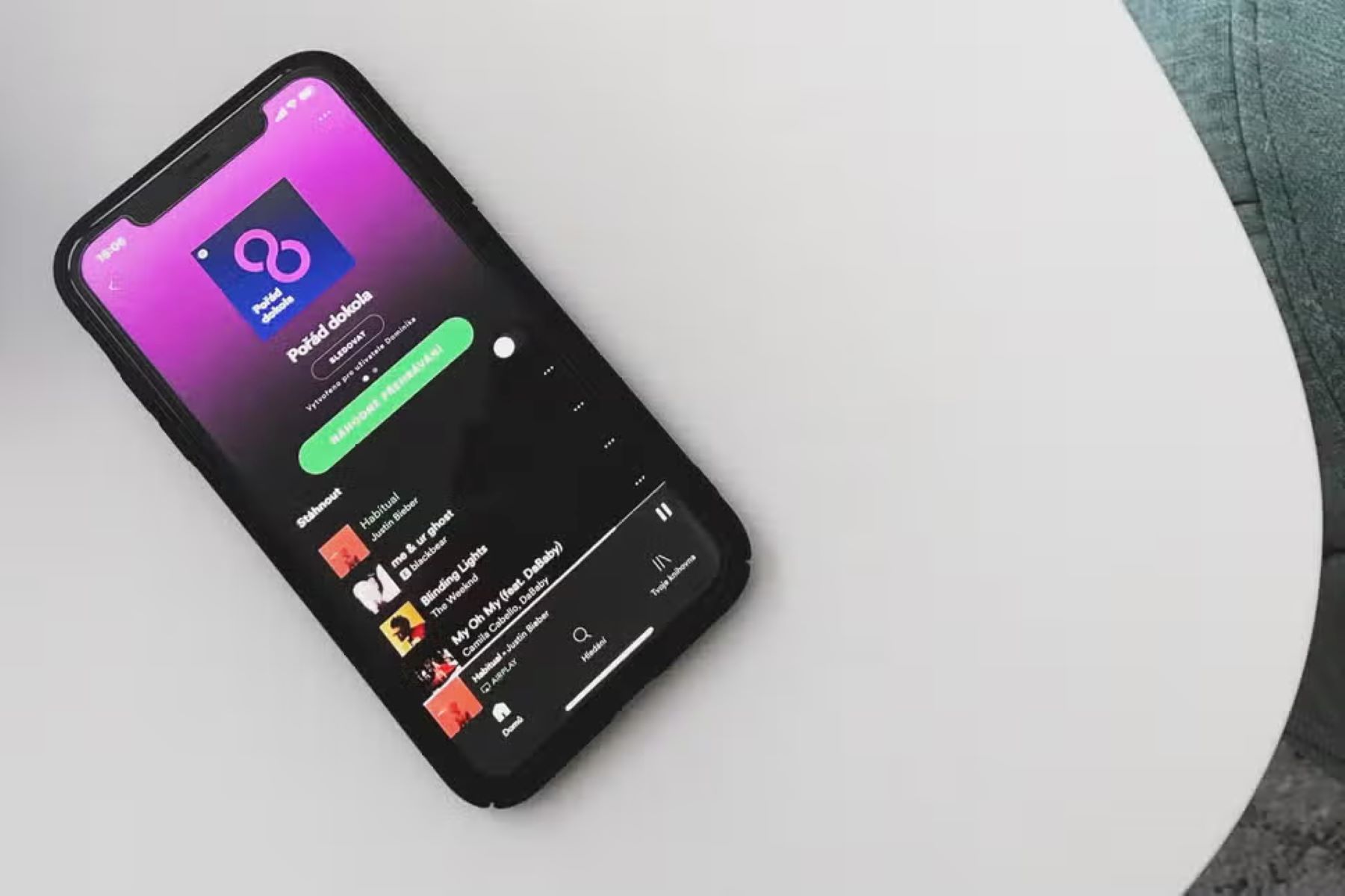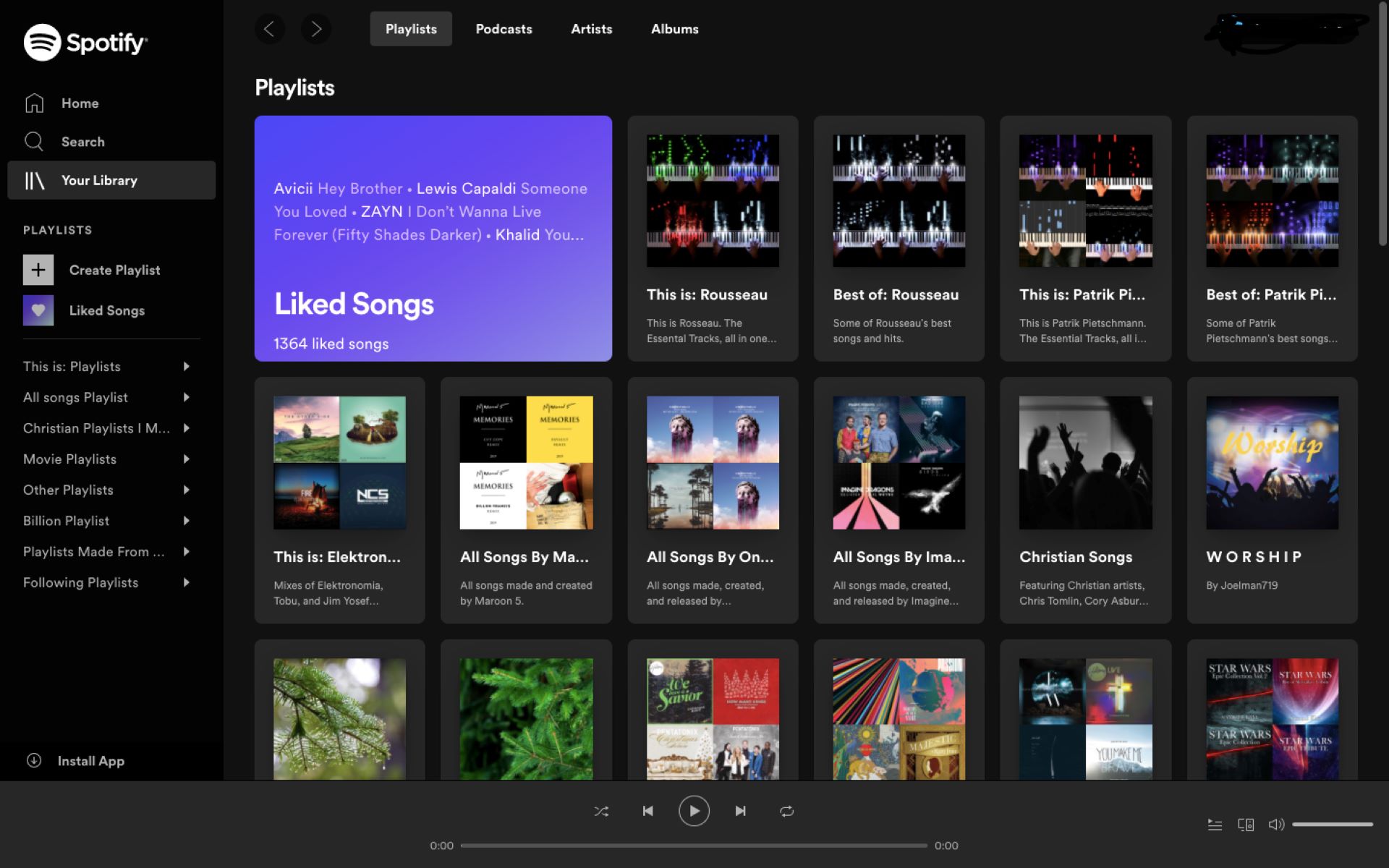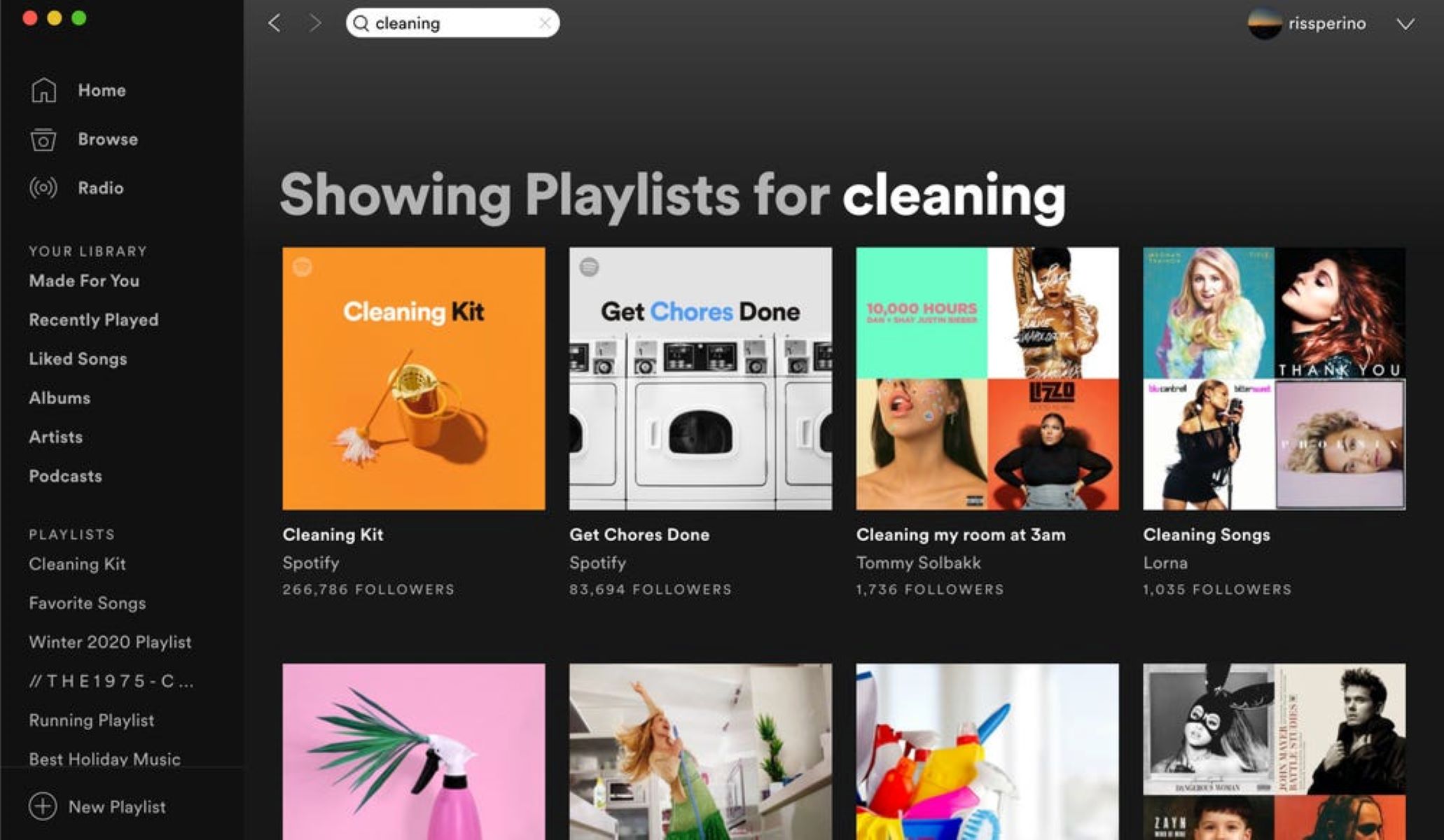Introduction
Welcome to the world of Spotify, one of the most popular music streaming platforms with millions of users worldwide. If you’re an aspiring musician or a seasoned artist looking to release your songs on Spotify, you’re in the right place. In this article, we’ll guide you through the process of getting your music out there and connecting with a massive audience.
Releasing your songs on Spotify can be an exciting and rewarding experience. With its vast user base and easy accessibility, the platform offers a great opportunity to showcase your talent and gain widespread recognition. However, it’s essential to approach the release process strategically to maximize your chances of success.
Whether you’re an independent artist or signed to a record label, the steps involved in releasing songs on Spotify remain relatively similar. In this guide, we’ll cover everything from choosing the right distributor and preparing your songs for release to customizing your artist profile, promoting your music, and analyzing your Spotify data.
Throughout the article, we’ll provide valuable insights and tips to help you navigate each stage successfully. From creating an engaging artist profile to promoting your release and engaging with your audience, we’ll equip you with the tools and knowledge needed to make the most of your Spotify journey.
So, if you’re ready to dive into the world of Spotify and share your music with the world, let’s get started. By the end of this guide, you’ll have a comprehensive understanding of how to release your songs on Spotify and make a lasting impression on listeners.
Choosing the Right Distributor
Before releasing your songs on Spotify, it’s crucial to choose the right distributor to help you navigate the process smoothly. A distributor acts as a bridge between you and the streaming platform, ensuring that your music reaches the right audience.
When selecting a distributor, consider factors such as their reputation, pricing, reach, and additional services they offer. It’s essential to choose a distributor that aligns with your specific needs and goals. Here are a few key points to consider:
- Reputation: Look for a distributor with a good reputation in the industry. You want to work with someone who has a track record of successfully delivering music to streaming platforms like Spotify.
- Pricing: Compare the pricing structures of different distributors. Some charge upfront fees, while others take a percentage of your streaming revenue. Make sure you understand the costs involved and choose an option that fits your budget.
- Reach: Consider the distributor’s reach and the number of platforms they can distribute your music to. While Spotify may be your main focus, it’s beneficial to have your songs available on other popular streaming services as well.
- Additional Services: Some distributors offer additional services like marketing support, playlist placement, and artist promotion. These services can greatly enhance your chances of success, especially if you’re an independent artist looking to gain visibility.
Researching and comparing different distributors will help you make an informed decision. Look for reviews and testimonials from other artists who have used their services. Additionally, take advantage of any trial periods or free features that distributors may offer to get a feel for their platform.
Once you have selected a distributor, they will guide you through the process of preparing your songs for release and submitting them to Spotify. They will handle tasks like encoding your audio files, adding metadata, and delivering your music to the streaming platform.
Choosing the right distributor is a crucial first step that can significantly impact the success of your release on Spotify. Take your time, do your research, and select a partner who can provide the support and services you need to make your music available to the world.
Preparing Your Songs for Release
Before you distribute your songs to Spotify, it’s important to ensure that they are properly prepared for release. Proper preparation will help optimize the quality and organization of your music, ensuring that it connects with listeners effectively. Here are some key steps to follow:
- Audio Quality: Start by ensuring that your songs are of high audio quality. Make sure they are mixed and mastered professionally to enhance the overall listening experience for your audience. Pay attention to details like clarity, volume levels, and overall balance to ensure that your music sounds its best.
- Metadata: Metadata refers to the information that accompanies your songs, such as the title, artist name, album artwork, genre, and track duration. It’s essential to provide accurate and relevant metadata to help listeners discover and identify your music. Double-check the spelling, capitalization, and formatting of your metadata to avoid any confusion or inaccuracies.
- Album Artwork: Create eye-catching and visually appealing album artwork that accurately represents your music. The artwork is often what catches the listener’s attention and entices them to click and listen to your songs. Make sure the dimensions and file format of your artwork align with Spotify’s requirements for optimal display.
- Lyrics: Consider adding lyrics to your songs, especially if they are lyrically rich or have a strong storytelling element. Lyrics can be displayed in the Spotify app, allowing listeners to follow along as they listen. Providing lyrics can enhance listener engagement and understanding of your music.
- Pre-Release Promotion: To build anticipation and generate buzz around your upcoming release, consider implementing a pre-release promotion strategy. This can include activities like sharing teasers, behind-the-scenes footage, or snippets of your songs on social media platforms. Engaging with your audience before the release can help create excitement and increase the chances of a successful launch.
Take the time to carefully prepare your songs for release. Pay attention to the finer details and make any necessary adjustments or improvements. By ensuring that your music is of high quality and properly organized, you set yourself up for a successful release on Spotify.
Creating a Spotify Artist Account
To release your songs on Spotify, you’ll need to create a Spotify Artist Account, which gives you access to a range of features and tools to manage your music effectively. Here’s a step-by-step guide to help you create your artist account:
- Sign Up: Visit the Spotify for Artists website and sign up for an account. You can either use your personal Spotify account or create a separate one specifically for your artist persona. Provide the required information, including your artist name, email address, and preferred password.
- Claim Your Profile: Once you’ve signed up, Spotify will verify your identity as an artist. If your music is already on Spotify, search for your artist name and claim your profile. If your music isn’t yet on the platform, you’ll need to distribute your songs to Spotify through an approved distributor (as mentioned in the previous section) to gain access to your artist profile.
- Verify Your Profile: After claiming your profile, you’ll need to verify it. Spotify will provide you with instructions on how to do this, which may involve verifying your social media accounts or submitting additional information. Verification adds credibility to your artist profile and provides you with access to more features.
- Complete Your Profile: Now it’s time to enhance your artist profile. Add a compelling bio that tells your story and resonates with your audience. Include links to your website, social media accounts, and other platforms where listeners can connect with you. This helps create a cohesive online presence for your music.
- Add Profile Picture: Choose a high-quality profile picture that represents your brand or artist identity. This can be your official artist logo, a professional photo, or an artwork image. Make sure the image is visually appealing and reflects your unique style.
- Manage Your Music: With a Spotify Artist Account, you have control over how your music appears on the platform. You can organize your songs into albums, add release dates, and make changes to your track listings as needed. This level of control allows you to curate your music library and present your songs in the best possible way.
Creating a Spotify Artist Account is a crucial step in effectively managing and promoting your music on Spotify. By following the steps outlined above, you’ll gain access to an array of tools and features that will help you connect with your audience and make the most of your Spotify journey.
Adding Your Songs to Spotify
Now that you have a Spotify Artist Account, it’s time to add your songs to the platform and make them available to the millions of Spotify users. Here’s a step-by-step process to help you get your music on Spotify:
- Choose a Distributor: As mentioned earlier, choose a reliable distributor to help you get your music on Spotify. They will encode your songs, handle the licensing and delivery process, and ensure that your music meets Spotify’s technical requirements.
- Prepare Your Music Files: Before submitting your songs, make sure they are in the required format and meet Spotify’s quality standards. Typically, distributors will require your music files to be in uncompressed formats like WAV or FLAC. Check with your distributor for specific guidelines and recommendations.
- Upload Your Music: Use your chosen distributor’s platform to upload your music files. Provide all the necessary information, including track titles, metadata, album artwork, and any additional details that will help listeners discover and engage with your songs.
- Set a Release Date: Choose a release date for your songs. This can be done at the time of uploading or through your distributor’s dashboard. Consider factors like marketing efforts, pre-release promotions, and any planned events or announcements when setting the date.
- Review and Confirm: Take the time to review all the information you’ve provided before confirming the release. Double-check the spelling, accuracy of metadata, and ensure that your music files are correctly tagged with the appropriate track and album information.
- Submit and Wait for Approval: Once you’ve reviewed and confirmed everything, submit your music for distribution. It may take some time for Spotify to review and approve your release. This process can vary, but generally, it takes a few days to a couple of weeks.
- Monitor Your Release: Keep an eye on your Spotify Artist Account and your distributor’s dashboard to track the progress of your release. Once your songs are available on Spotify, you’ll be able to see how they are performing and gaining traction among listeners.
Adding your songs to Spotify is an exciting step towards reaching a wider audience. By following the steps outlined above, you’ll ensure a seamless and professional upload process that will make your songs accessible to Spotify’s vast user base.
Customizing Your Artist Profile
Your artist profile on Spotify is a digital representation of your brand and music. Customizing your profile allows you to make a lasting impression on your audience and provide them with an engaging experience. Here are some key ways to customize your Spotify artist profile:
- Profile Picture: Choose a visually appealing profile picture that accurately represents your brand or artist identity. This image will be displayed alongside your music and should capture the attention of potential listeners. Make sure your profile picture is clear, high-quality, and relevant to your music.
- Header Image: Customize your artist profile further by adding a header image. This larger image appears at the top of your profile, providing an opportunity to showcase your aesthetic and style. Use it to convey a vibe or theme that aligns with your music and engages your audience visually.
- Artist Bio: Craft a compelling artist bio that tells your story and draws listeners in. Use this space to share your musical journey, influences, and any noteworthy achievements. Keep it concise, authentic, and captivating to leave a lasting impression on your audience.
- Social Media and Website Links: Connect your Spotify artist profile to your social media accounts and website. This helps your audience discover more about you and stay updated on your latest releases, events, and announcements. Adding these links creates a cohesive online presence and encourages fan engagement.
- Playlist Placement: Collaborate with curators and influencers to get your songs featured in popular playlists. Playlist placement can significantly boost your visibility and help you reach new listeners. Research relevant playlists that align with your genre or style and pitch your music to curators who curate those playlists.
- Verified Artist Badge: Once your profile gains popularity, you may be eligible for a verified artist badge. This badge adds credibility to your profile and lets fans know that it’s an official representation of your music. Verification typically involves meeting certain criteria and proving that you are the authentic artist behind the music.
- Engage with Fans: Use the “About” section of your Spotify artist profile to communicate directly with your fans. This can include sharing updates, exclusive content, or personal messages. Engaging with your fans builds a loyal community and strengthens the connection between you and your audience.
Customizing your artist profile allows you to create a unique and immersive experience for your listeners. Pay attention to the details and ensure that your profile accurately represents your brand, music, and personality. By captivating your audience with a well-crafted profile, you can leave a lasting impression and encourage more people to explore your music.
Promoting Your Release
Once your songs are released on Spotify, it’s crucial to actively promote your music to reach a larger audience and increase your chances of success. Here are some effective strategies to promote your release:
- Share on Social Media: Leverage the power of social media to promote your music. Share your songs, updates, behind-the-scenes footage, and teasers on platforms like Instagram, Facebook, Twitter, and TikTok. Engage with your followers, respond to comments, and encourage them to share your music with their networks.
- Create Music Videos: Visual content is highly engaging and can help promote your music effectively. Consider creating music videos for your songs and sharing them on platforms like YouTube and Vevo. Music videos offer a visual representation of your music and can attract new listeners who are drawn to captivating visuals.
- Pitch to Blogs and Influencers: Research music blogs and influencers in your genre or niche and pitch your music to them. Build relationships with these individuals and offer them exclusive content, interviews, or early access to your songs. Their support can greatly amplify your reach and expose your music to new audiences.
- Collaborate with Other Artists: Collaborating with other artists can expand your reach and introduce your music to their fan base. Look for artists who complement your style and reach out to them for potential collaborations. Joint releases, featuring on each other’s songs, or even organizing joint performances can mutually benefit all artists involved.
- Perform Live: Organize live performances to showcase your music and connect with fans on a personal level. This can include gigs at local venues, festivals, or even virtual concerts. Live performances offer a unique opportunity to create an unforgettable experience and leave a lasting impression on your audience.
- Submit to Spotify Playlists: Keep an eye out for relevant Spotify playlists and submit your songs for consideration. Some playlists are curated by Spotify’s internal team, while others are created by independent curators. Submitting your music to playlists can increase your visibility and potentially attract more listeners.
- Engage with Your Audience: Interact with your listeners on Spotify by responding to comments, creating personalized playlists, and sharing updates. Engaging with your audience helps foster a loyal fan base and encourages them to continue supporting your music.
Promoting your release requires an active and multi-faceted approach. Utilize the power of social media, collaborate with other artists, reach out to influencers and blogs, perform live, and engage directly with your audience. By implementing these strategies, you can effectively promote your music and increase your chances of gaining traction on Spotify.
Engaging with Your Audience
Building a strong connection with your audience is essential for long-term success as an artist on Spotify. Engaging with your listeners not only helps you cultivate a loyal fan base but also provides valuable insights and feedback. Here are some effective ways to engage with your audience:
- Respond to Comments: Take the time to read and respond to comments on your songs, playlists, and artist profile. Show your appreciation for feedback and engage in meaningful conversations with your fans. Responding to comments creates a sense of connection and makes your listeners feel valued.
- Create Personalized Playlists: Curate playlists that showcase your favorite songs, influences, or songs that complement your own music. Share these playlists with your audience and explain the thought and inspiration behind your song choices. This allows your fans to understand your musical tastes better and helps strengthen the connection between you and your listeners.
- Share Behind-the-Scenes Content: Give your audience a glimpse into your creative process by sharing behind-the-scenes content. This can include studio footage, writing sessions, rehearsals, or even personal moments. Sharing these moments makes your fans feel like they are part of your journey and builds a sense of intimacy.
- Run Contests and Giveaways: Engage your audience by running contests or giveaways where they have a chance to win exclusive merchandise, concert tickets, or even an opportunity to collaborate with you. Contests and giveaways create excitement and encourage your fans to actively participate and share your music with others.
- Host Q&A Sessions: Schedule Q&A sessions where you answer questions from your fans. These can be conducted on social media platforms, through live streams, or even through Spotify’s community features. This direct interaction allows your audience to connect with you on a personal level and gain insights into your music and career.
- Attend Meet and Greets: Organize meet and greet events where you can interact with fans in person. Whether it’s before or after a live performance or through dedicated fan events, meeting your fans face-to-face helps solidify the bond between you and your audience.
- Take Fan Suggestions into Consideration: Listen to your audience and take their suggestions into consideration. This can include everything from song requests for future releases to ideas for merchandise or even tour locations. By showing that you value their input, you build a sense of community and foster a loyal following.
Engaging with your audience is an ongoing process that requires active participation and communication. By responding to comments, sharing personal content, running contests, hosting Q&A sessions, and taking fan suggestions into consideration, you deepen the connection between you and your audience. This engagement not only helps retain existing fans but also attracts new listeners who appreciate your authenticity and dedication.
Analyzing Your Spotify Data
Spotify provides valuable data and insights that can help you understand how your music is performing and make informed decisions about your promotional strategies. By analyzing your Spotify data, you can gain insights into your audience, track trends, and measure the success of your releases. Here’s how you can effectively analyze your Spotify data:
- Streams and Listeners: Monitor the number of streams and unique listeners your songs are receiving. This data shows the overall popularity of your tracks and helps you gauge the level of engagement with your audience. Watch out for trends, spikes, or declines in streams to identify which songs are resonating the most with listeners.
- Playlist Performance: Pay attention to how your songs are performing in Spotify playlists. Identify which playlists are driving the most streams and attract new listeners. This data can help you gauge the effectiveness of playlist placements and inform your future marketing and promotion strategies.
- Demographics and Geography: Analyze the demographics and geography of your listeners. Spotify provides insights into the age, gender, and location of your audience. This information can help you understand who your music resonates with the most, allowing you to tailor your marketing efforts to reach specific demographics or target regions.
- Engagement Metrics: Look at engagement metrics such as saved songs, follows, and playlist additions. These metrics indicate the level of interest and engagement your songs are generating among listeners. Analyze which songs are being saved or added to playlists the most, as this can help you identify your most popular and impactful tracks.
- Release Timing and Impact: Pay attention to the release date and timing of your songs. Analyze how your music performs in the days and weeks following a release. This can help you determine the ideal time to release new music and plan your promotional efforts accordingly.
- Comparison and Benchmarking: Compare your data over time and against previous releases. Look for patterns and trends in terms of streams, listener growth, and engagement. Benchmark your performance against similar artists in your genre to get a sense of where you stand and identify areas for improvement.
- Useful Tools: Utilize Spotify for Artists’ analytics dashboard and other third-party tools to access more detailed data and insights. These tools can provide deeper dives into your audience engagement, playlist performance, and listener behavior, allowing you to make data-driven decisions to grow your music career.
By regularly analyzing your Spotify data, you can gain a deeper understanding of your audience, track the success of your releases, and refine your promotional strategies. This data-driven approach will help you make informed decisions, focus on areas of growth, and effectively nurture your fan base on Spotify.
Conclusion
Congratulations on taking the initiative to release your songs on Spotify! This guide has provided you with a step-by-step process to navigate the world of Spotify, from choosing the right distributor to analyzing your Spotify data. By following these steps and incorporating effective strategies for promoting and engaging with your audience, you can maximize your chances of success.
Remember, creating a strong presence on Spotify takes time and effort. Be patient and consistent in your promotional efforts, and don’t be afraid to experiment with different strategies to see what works best for you. Keep an eye on your Spotify data to gain insights into your audience and adjust your approach accordingly. Take advantage of the tools and resources available to you, such as Spotify for Artists and third-party analytics tools, to make data-driven decisions.
Building a loyal fan base and gaining recognition on Spotify is a journey that requires dedication, creativity, and perseverance. Utilize social media, collaborate with other artists, perform live, and engage with your listeners to create a strong and lasting connection. Remember to stay authentic to your music and nurture your unique artistic vision throughout the process.
Now it’s time to take the knowledge and techniques you’ve gained from this guide and apply them to your own music career on Spotify. Embrace the opportunities that the platform provides, share your music with the world, and continue to hone your craft as an artist. The path to success may have its challenges, but with determination and a clear strategy, your songs have the potential to resonate with millions of listeners on Spotify.
So go ahead, release your songs on Spotify, connect with your audience, and let the power of music take you to new heights.







